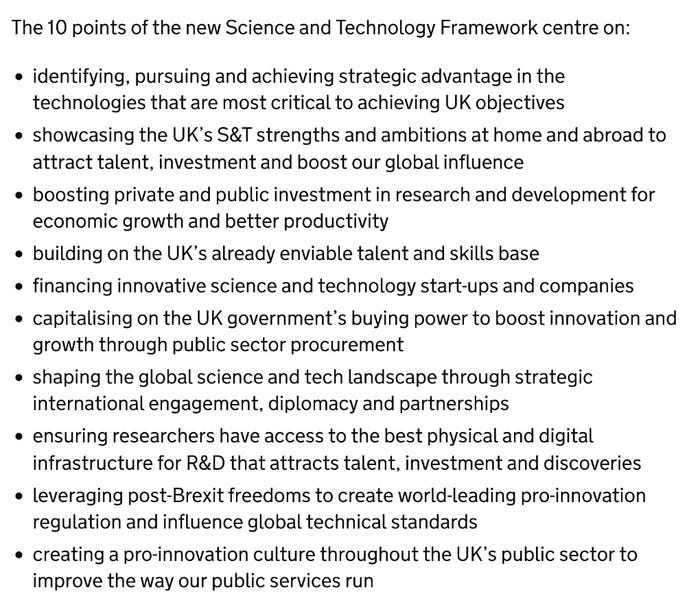UK tech superpower plan derailed by QR codeUK tech superpower plan derailed by QR code
The UK is going to be a science and technology superpower by 2030, but none of us knew about it until Prime Minister Rishi Sunak created a social media furore by sharing a QR code on Twitter.
March 8, 2023

The UK is going to be a science and technology superpower by 2030, but none of us knew about it until Prime Minister Rishi Sunak created a social media furore by sharing a QR code on Twitter.
The government on Monday shared its plan, dubbed the Science and Technology Framework, backed by around £370 million in new funding. It is designed to boost infrastructure, investment and skills in areas such as quantum technologies, supercomputing and AI.
It comes with a 10-point plan, most of which is pretty nebulous (see below), but then again its aim to turn the country into a tech superpower by the end of the decade is also fairly vague. However, there is some substance to the projects that will come under the umbrella of the plan, the most noteworthy being a £250 million spend on AI, quantum technologies and engineering biology that the state says will contribute to climate change initiatives and healthcare.
 Those areas – engineering biology being the use of engineering principles in the design of biological systems, incidentally – form three of the five technologies identified as key under the framework; the other two are semiconductors and future telecoms. The last is delightfully broad, but is defined by the government as “evolutions of the infrastructure for digitised data and communications,” which pretty much sums up what this industry is all about.
Those areas – engineering biology being the use of engineering principles in the design of biological systems, incidentally – form three of the five technologies identified as key under the framework; the other two are semiconductors and future telecoms. The last is delightfully broad, but is defined by the government as “evolutions of the infrastructure for digitised data and communications,” which pretty much sums up what this industry is all about.
Anyway, the full Science and Technology Framework document, which can be downloaded here, includes further details on the early work to be undertaken under the plan. We can expect a white paper on AI regulation and another on UK strategies for semiconductors and quantum technologies in early 2023, the government says, which given that it’s now March, must be ready to go. A strategy on engineering biology and its applications is due by mid-year. The government also plans to publish its Wireless Infrastructure Strategy, including its R&D priorities for 6G, at an unspecified date.
Despite being peppered with buzz words like quantum, AI and 6G, and being the first major piece of work from the newly created Department for Science, Innovation and Technology, the framework initially failed to capture our attention. Until, that is, the PM took it upon himself to use modern technology to publicise it.
Sunak Tweeted a QR code with the caption ‘Innovation means growth.’ And suddenly Twitter was awash with people complaining that they couldn’t scan the QR code, because they use Twitter on a smartphone, not a laptop, as apparently does a massive percentage of the population. And Sunak – or at least the government marketing machine – should really have known that.
It’s hardly the mistake of the century, but it doesn’t inspire a lot of confidence in those seeking to create a technology superpower, does it?
Scanning the code leads to a download page for the Adobe Aero app, which is an AR content creation tool. Being about as hip with the kids as Sunak, I didn’t get any further than that, but social media informs me that it does eventually lead to the above superpower announcement.
Which many of us had missed, presumably due to starting the week in a post-Mobile World Congress brain fog.
It seems unlikely that the QR code gaffe was a cunning ‘no such thing as bad publicity’ ruse on the part of the government. But it seems to have done the trick anyway.
Get the latest news straight to your inbox. Register for the Telecoms.com newsletter here.
About the Author
You May Also Like










.png?width=300&auto=webp&quality=80&disable=upscale)


_1.jpg?width=300&auto=webp&quality=80&disable=upscale)